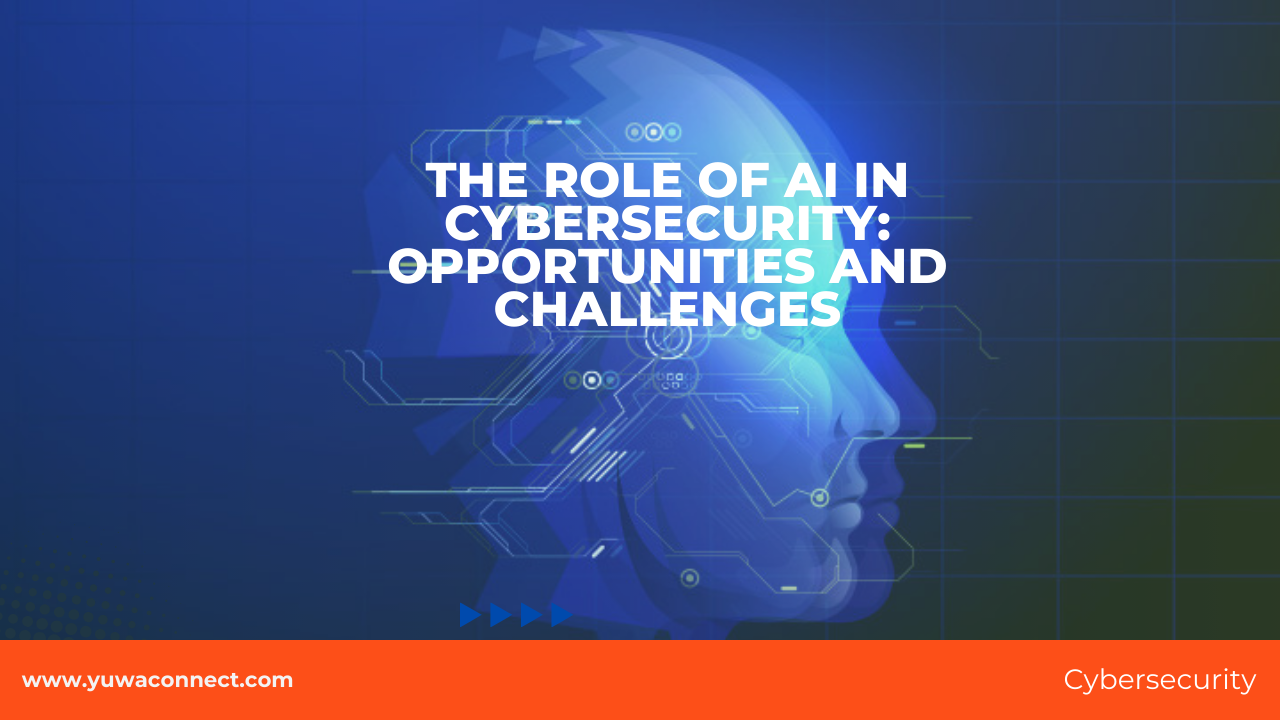Artificial Intelligence (AI) is revolutionizing various industries, and cybersecurity is no exception. As cyber threats become more sophisticated, traditional security measures struggle to keep up. AI offers a promising solution by enhancing the ability to detect, respond to, and prevent cyber threats. However, while AI presents significant opportunities for improving cybersecurity, it also introduces new challenges. In this article, we’ll explore the role of AI in cybersecurity, the opportunities it provides, and the challenges it poses.
Opportunities Presented by AI in Cybersecurity
- Enhanced Threat Detection:
- AI can process vast amounts of data at incredible speeds, allowing it to identify threats that might go unnoticed by human analysts. Machine learning algorithms can analyze patterns and detect anomalies that indicate a potential security breach.
- AI-driven systems can continuously learn and adapt to new threats, improving their detection capabilities over time. This proactive approach helps organizations stay ahead of emerging threats.
- Automated Response and Incident Management:
- AI can automate the response to certain types of security incidents, reducing the time it takes to mitigate threats. For example, AI can automatically quarantine compromised systems, block malicious IP addresses, or isolate suspicious activities, minimizing potential damage.
- Automation also allows security teams to focus on more complex tasks, as AI handles routine incident management activities, such as log analysis and alert prioritization.
- Predictive Security:
- By analyzing historical data and identifying trends, AI can predict potential security threats before they occur. Predictive security helps organizations take preventive measures, such as patching vulnerabilities or adjusting security policies, to reduce the risk of attacks.
- AI-driven threat intelligence can provide insights into potential attack vectors, allowing organizations to fortify their defenses in advance.
- Improved User Authentication:
- AI can enhance user authentication processes by analyzing behavioral patterns, such as typing speed, mouse movements, and login times. This allows for more secure and personalized authentication methods, reducing the risk of unauthorized access.
- AI-driven biometric authentication, such as facial recognition or voice identification, adds an extra layer of security by ensuring that only authorized users gain access to sensitive systems.
Challenges of Implementing AI in Cybersecurity
- Data Quality and Availability:
- AI systems rely on large datasets to learn and make decisions. However, the quality and availability of data can be a challenge. Inaccurate, incomplete, or biased data can lead to incorrect predictions or missed threats.
- Ensuring that AI systems have access to high-quality, diverse data is essential for effective threat detection and response.
- Adversarial AI:
- Cybercriminals can use AI to develop more sophisticated attacks, such as creating malware that can evade traditional detection methods. Adversarial AI involves manipulating AI models to bypass security measures or create false positives, making it harder for defenders to respond effectively.
- This cat-and-mouse game between attackers and defenders raises the stakes in cybersecurity, requiring continuous innovation to stay ahead of malicious actors.
- Complexity and Integration:
- Implementing AI in cybersecurity involves integrating it with existing security infrastructure, which can be complex and resource-intensive. Organizations need to ensure that AI systems work seamlessly with other tools and technologies to provide a cohesive defense.
- The complexity of AI-driven systems also requires specialized skills and knowledge, which can be a barrier for some organizations.
- Ethical Considerations and Bias:
- AI systems can unintentionally introduce bias into cybersecurity decisions, leading to unfair treatment or discrimination. For example, biased algorithms might disproportionately target certain users or overlook threats based on flawed assumptions.
- Ensuring transparency, fairness, and accountability in AI-driven cybersecurity systems is crucial to avoid unintended consequences and maintain trust.
Conclusion
AI has the potential to significantly enhance cybersecurity by improving threat detection, automating response processes, and predicting future attacks. However, the adoption of AI also presents challenges, including data quality issues, adversarial AI, integration complexity, and ethical concerns. To fully leverage the benefits of AI in cybersecurity, organizations must address these challenges head-on and continuously evolve their strategies. As cyber threats become more sophisticated, AI will play an increasingly vital role in protecting digital assets, but it must be implemented thoughtfully and responsibly to maximize its effectiveness.











One thought on “The Role of AI in Cybersecurity: Opportunities and Challenges”